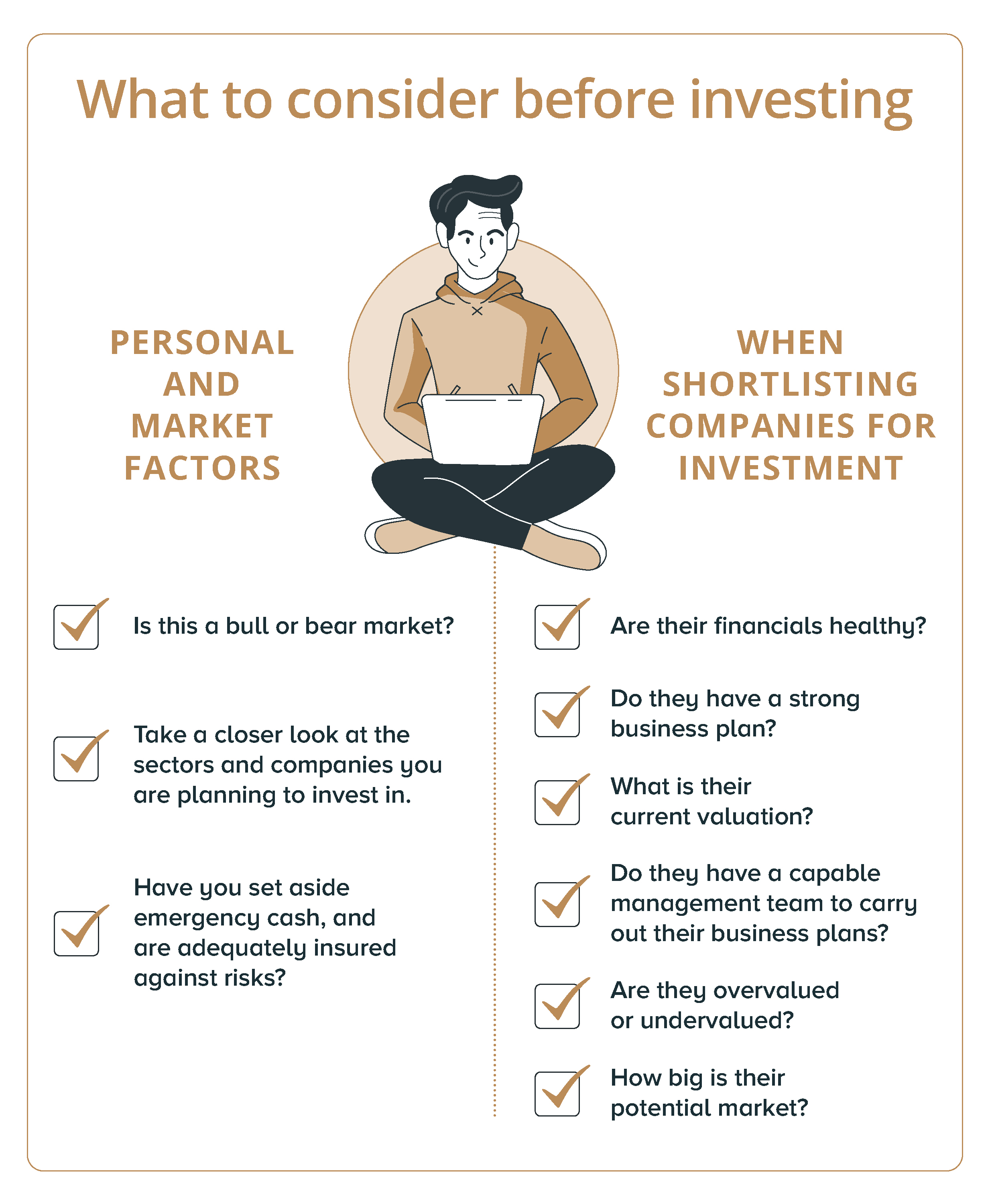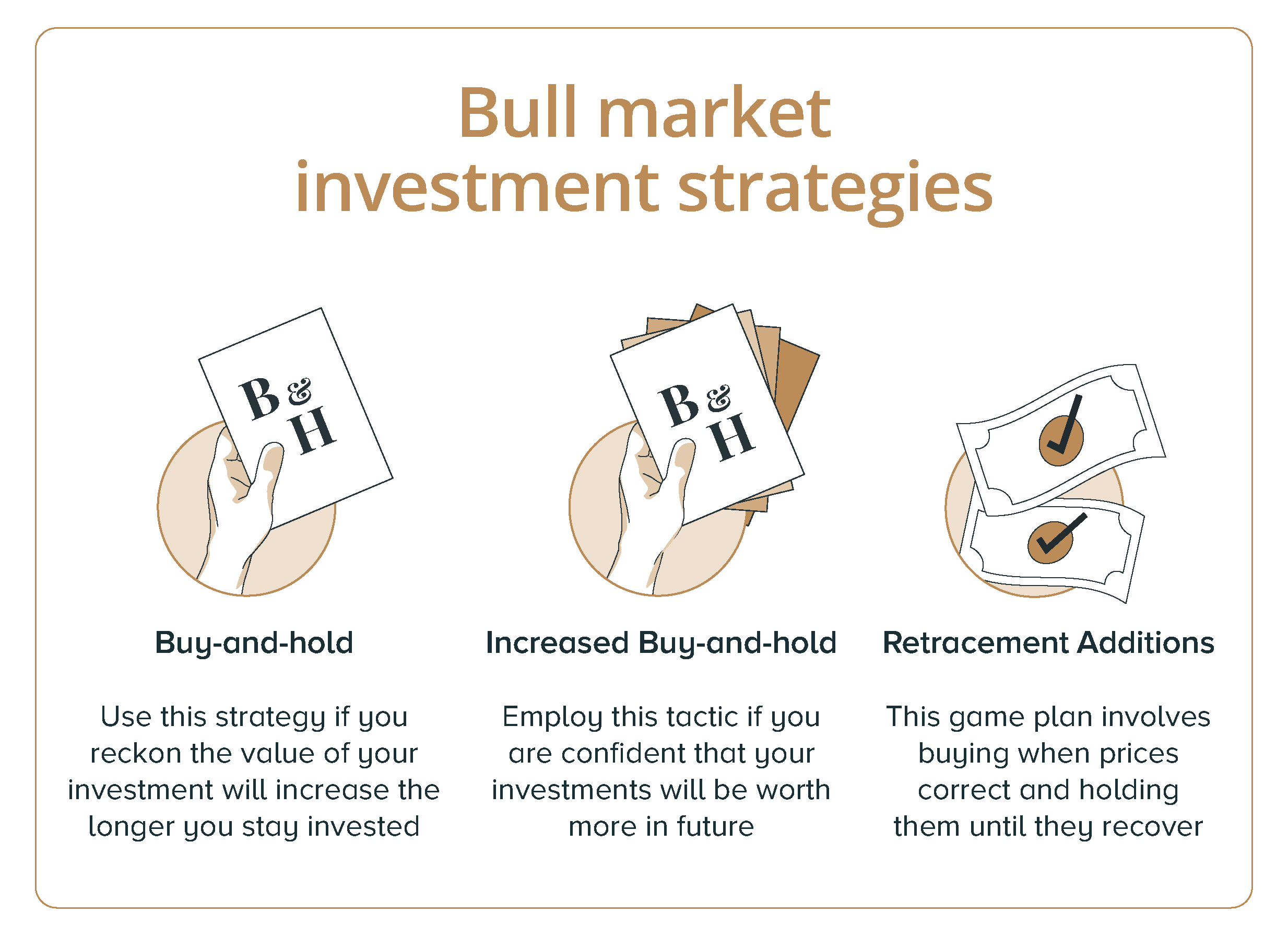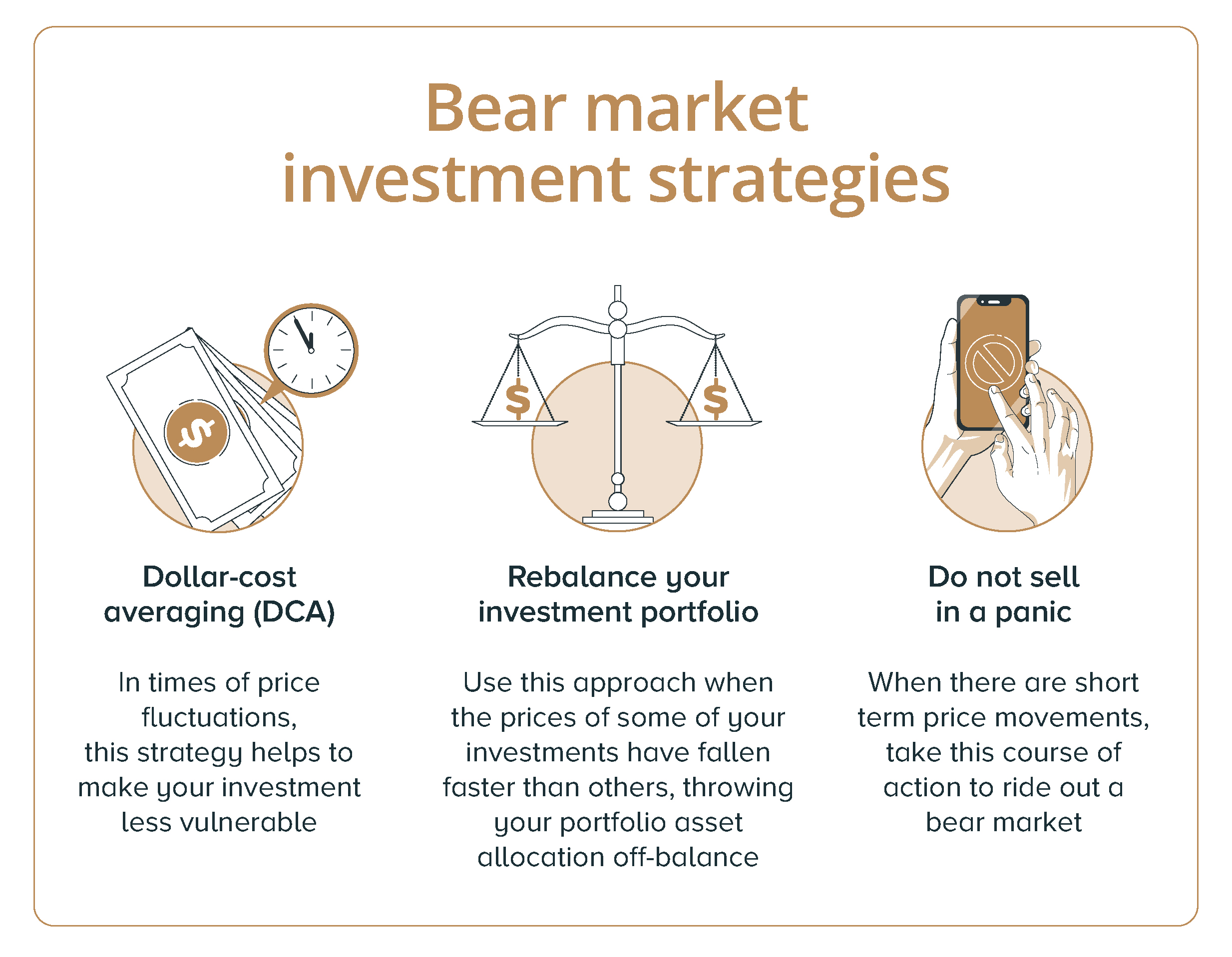When markets are volatile and investment analysts have conflicting views, selecting a suitable investment strategy can get extra challenging.
Identifying bull and bear markets can help you navigate your portfolio but it is not a straightforward task as there are many factors involved. Think of investing like hiking, where analysing the markets is similar to assessing your trekking route and weather conditions, which ultimately indicate if you will have a leisurely or strenuous trail ahead.
The hiking gear you have is akin to the investment tools that you would use to plan your portfolio, while your fitness level is similar to your investing skills and resources and would determine how much risk you’re willing to take on your hike, and your investment journey alike. And you can definitely think of the team of investment experts at DBS as your mountain guide or experienced hiking buddy who is integral in the success of your hike.
Despite the challenges, recognising a bull or bear market can be important to help you decide how you would invest your money. Read on to learn how to distinguish a bull or bear market, and the investment strategies that tend to do well in these scenarios.
How do you identify a bull market or a bear market?

Fundamentally, a bull market is marked by consistently-rising prices, while a bear market is the opposite, with prices that are consistently falling. Prices would also need to rise or fall by about 20%, in order to confirm it is a bull or bear market.
When markets are volatile, however, prices can change direction quickly. This leaves many investors wondering if the bull or bear market that they saw earlier was real, whether it will resume, or whether it is over.
At this point, focus your attention on the real reason why prices are changing – the imbalance in supply and demand for the investment you’re looking at. Take stocks for instance:
| When demand for stocks is | And supply of stocks is | The result |
|---|---|---|
| Strong | Not enough | Rising prices |
| Weak | More than enough | Falling prices |
To assess if the bull market or bear market will continue, look out for the following signs.

A bull market is often characterised by a healthy dose of investor optimism. Investors are more willing to invest in stock markets, which increases the demand for stocks and prices even further. In such times, more companies would also seek to be listed on the stock exchanges to capitalise on this increased demand.
Bull markets also often coincide with periods of healthy economic growth. So that’s another thing to look out for: positive economic data, strong corporate earnings, and low unemployment numbers.

In a bear market, the opposite is often (though not always) true. Investors are less optimistic about the market and tend to be more reluctant to invest in equities as prices fall.
A bear market could also coincide with periods of slowing economic growth. Signs of this include weaker corporate earnings and high unemployment rates. Another key sign of a bear market: When major central banks such as the US Federal Reserve lower their domestic interest rates.
Consider these factors before investing

Whatever type of market we are in, there are personal and market factors to consider before investing. Once you’ve identified some companies as potential candidates to invest in, shortlist them by assessing these factors:

Take the Covid-19 pandemic as an example. Many businesses were adversely affected by the halt in tourism and air travel, and by safe distancing measures. These include airlines, tour agencies, cruise companies and food & beverage firms.
On the other hand, several businesses such as healthcare equipment manufacturing companies, online service providers and e-commerce boomed amid the lockdowns.
Some investors may be tempted to invest in the badly-hit businesses, believing that their low valuations would rebound and be beneficial in the long-run.
But with the severity of the pandemic’s impact, you need to deepen your research. Assess which companies’ stock prices may never return to their previous highs, and if you have already invested in them, consider investing in those with stronger financials instead.
Investment strategies for a bull market

In a bull market, you would be investing as prices are going up.
If you believe prices will continue to go up, you could opt for a buy-and-hold investment strategy. This means that you buy and you hang on, expecting that the longer you stay invested, the higher the value of your investment.
An alternative is the increased buy-and-hold strategy, which is a variation of the buy-and-hold strategy where you continue to buy even as prices increase. Consider this strategy only if you are confident that your investments are still undervalued and will be worth more in future.
However, there will still be periods of volatility and price fluctuations even in a bull market.
To invest amidst such volatility, consider the retracement additions strategy, in which you buy when prices correct and hold them until they recover.

Investment strategies for a bear market

When investing in a bear market, dips in the markets are often more difficult to identify than the highs. It is also more challenging to make sound judgement calls when affected by pessimism and negative news.
So, when investing in a bear market, the key lies in maintaining a long-term view.
Consider the dollar-cost averaging (DCA) investment strategy, which divides your funds into bite sized portions, and investing each portion at fixed intervals. Doing so buys you more shares when prices are lower, and fewer shares when prices are higher. This helps to lower your average purchase price and makes your investment less vulnerable to price fluctuations. When your cost is lower, your returns will improve too.
It also helps to rebalance your investment portfolio back to its long-term asset allocation target. Rebalancing is especially important to maintain shape in a bear market, as the prices of some of your investments would have fallen faster than others, throwing your overall portfolio asset allocation off-balance.
For example, if your fixed income assets now have a higher allocation than originally planned, rebalancing means selling some of them in favour of equities. Rebalancing your portfolio during a bear market can also help you reap the gains from a market recovery.
Lastly, investors should be careful not to sell in a panic. If you have sufficient cash to ride out the bear market, try not to be affected by short term price movements.

Let smart wealth management be your guide

When markets are volatile, it can be challenging to build a robust investment portfolio. Just like hiking Mount Kilimanjaro, the journey is more pleasant with the appropriate hiking gear and experienced mountain guides.
Your investment journey is unique to you, and at DBS Treasures we are in the business of managing your wealth the smart way.
Whatever your needs for today or tomorrow, access smart wealth solutions that work for your preferences and risk appetite, even as your needs change.
From tailored products to ready-made managed investments, choose from mutual funds, digiPortfolio, structured products, fixed income, equities, and currencies to deliver the results you need for your goals.
Stay in control with the DBS digiBank app’s complete suite of features and alerts that anticipate your needs.
And get smart personalised advisory from your Relationship Manager who taps on digital intelligence to help you decide on your investments with confidence.
Get in touch for smart solutions to grow your wealth
Or contact your Relationship Manager if you are an existing client.
Disclaimers and Important Notices
This article is for information only and should not be relied upon as financial advice. Any views, opinions or recommendation expressed in this article does not take into account the specific investment objectives, financial situation or particular needs of any particular person. Before making any decision to buy, sell or hold any investment or insurance product, you should seek advice from a financial adviser regarding its suitability. This article is not intended for distribution to, or use by, any person or entity in any jurisdiction or country where such distribution or use would be contrary to law or regulation.








